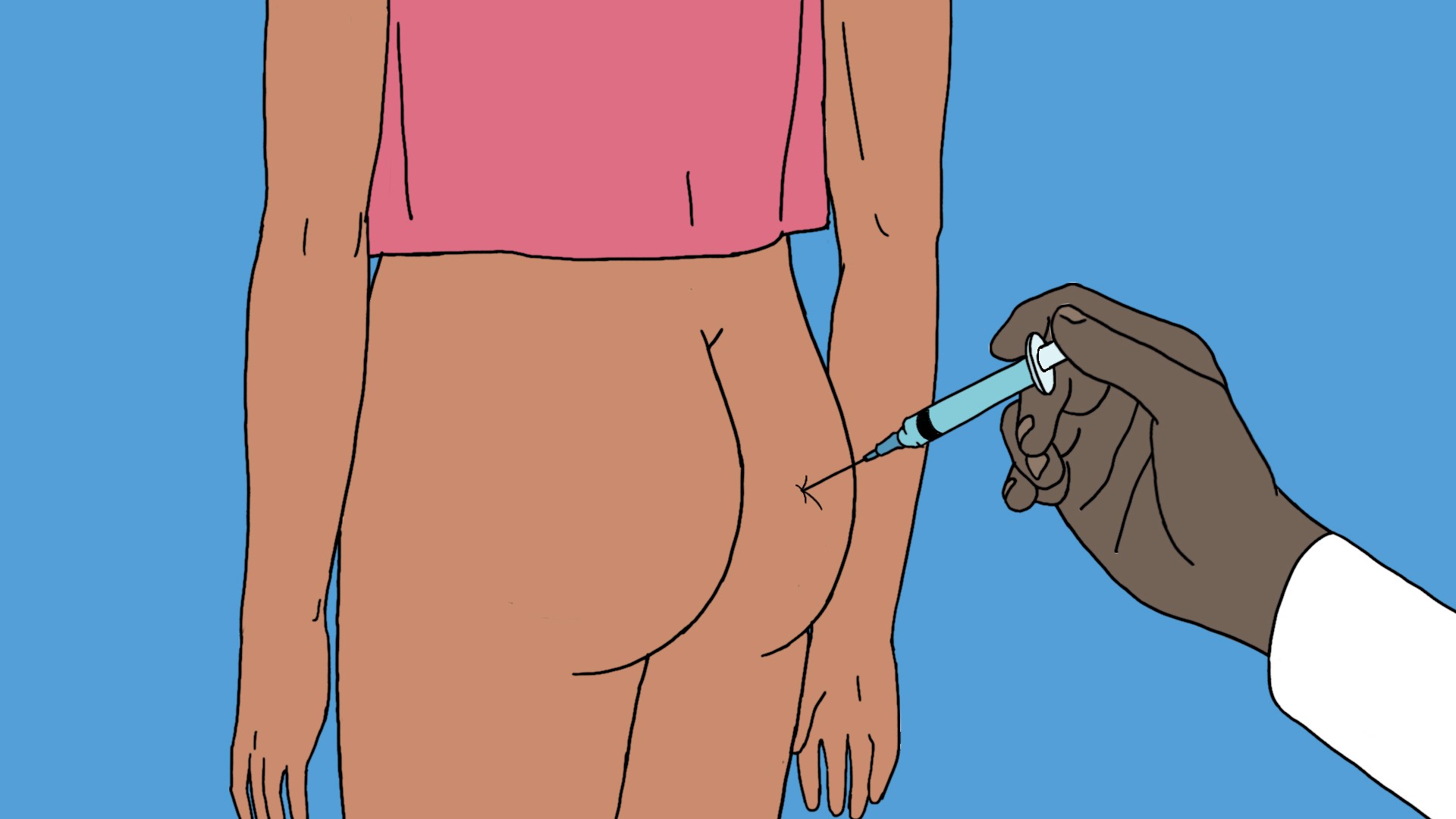Science Picture Co/Getty Images
To the list of worries in the world—global warming, a president trying to sabotage American healthcare, bears—you can now add drug-resistant gonorrhea. A strain of the bacteria that’s resistant to a key antibiotic, ceftriaxone, has emerged in Quebec. It’s the first time such a strain has been found in North America.The standard treatment for gonorrhea includes two antibiotics. One, ceftriaxone, is administered via an injection and the second, azithromycin, is delivered as a pill. This one-two punch should knock out most infections for most people. But it’s also the last of the easy cures for gonorrhea, which has barreled through the repertoire of available treatments—in fact, gonorrhea used to be treatable with a single pill. Drug companies are working on new solutions, but we’re running low on options until those arrive.So yeah, it’s a problem. The clap might sound like a punchline from a 1970’s teen comedy, but there were nearly 469,000 cases were diagnosed in the United States last year, according to the Centers for Disease Control and Prevention (CDC). The rate of infection is the highest it’s been in decades, and the CDC lists the gonorrhea bacteria among three “urgent hazards” of public health. Untreated gonorrhea can lead to scarring of the urethra in men and pelvic inflammatory disease and infertility in women.
Watch More from Tonic:
Meanwhile, treatment-resistant strains have appeared in Japan, Europe, and, last fall, in Hawaii. The strain in Hawaii wasn’t fully resistant; while it didn’t respond to azithromycin, it was treatable with ceftriaxone. Azithromycin has proven to be the weaker part of the one-two treatment, and resistance to it has been rising. Doctors in Hawaii, though, saw signs of developing resistance to ceftriaxone and warned that we’re getting closer to a time when gonorrhea may be untreatable with current meds.Which brings us to the current case. A 23-year-old woman in Quebec tested positive for gonorrhea during an STI screening; she had no symptoms. Test results showed that she was infected with a strain of the bacteria genetically similar to the resistant type found in Japan. Her most recent boyfriend had previously traveled to China and Thailand and had unprotected sex there, which suggests the strain may be spreading. The case was outlined in Emerging Infectious Diseases, a CDC journal.Her case proved resistant to ceftriaxone, though luckily it was cured with azithromycin. But again, increasingly, we can't count on that one. That means that the last of our two easy-to-use weapons against gonorrhea may be faltering—first azithromycin, now ceftriaxone.“This worries me. It worries me because we haven’t seen the ceftriaxone decreased susceptibility at this level,” Alan Katz, who is with Hawaii’s state board of health and studied the antibiotic-resistant gonorrhea found there last year, told STAT News.The trajectory is grim: Gonorrhea rates are way up and the bacteria keeps developing ways to thwart our best weapons. That means treatment is likely to grow more complicated, with higher dosages and more follow-ups, and even a return to older, harsher drugs that’d been shelved because of their nasty side effects. And it’ll mean acknowledging that gonorrhea is no joke, but an ongoing public health crisis.Read This Next: The Final Word on What You Can Catch From Oral Sex
Advertisement
Watch More from Tonic:

Meanwhile, treatment-resistant strains have appeared in Japan, Europe, and, last fall, in Hawaii. The strain in Hawaii wasn’t fully resistant; while it didn’t respond to azithromycin, it was treatable with ceftriaxone. Azithromycin has proven to be the weaker part of the one-two treatment, and resistance to it has been rising. Doctors in Hawaii, though, saw signs of developing resistance to ceftriaxone and warned that we’re getting closer to a time when gonorrhea may be untreatable with current meds.Which brings us to the current case. A 23-year-old woman in Quebec tested positive for gonorrhea during an STI screening; she had no symptoms. Test results showed that she was infected with a strain of the bacteria genetically similar to the resistant type found in Japan. Her most recent boyfriend had previously traveled to China and Thailand and had unprotected sex there, which suggests the strain may be spreading. The case was outlined in Emerging Infectious Diseases, a CDC journal.Her case proved resistant to ceftriaxone, though luckily it was cured with azithromycin. But again, increasingly, we can't count on that one. That means that the last of our two easy-to-use weapons against gonorrhea may be faltering—first azithromycin, now ceftriaxone.“This worries me. It worries me because we haven’t seen the ceftriaxone decreased susceptibility at this level,” Alan Katz, who is with Hawaii’s state board of health and studied the antibiotic-resistant gonorrhea found there last year, told STAT News.The trajectory is grim: Gonorrhea rates are way up and the bacteria keeps developing ways to thwart our best weapons. That means treatment is likely to grow more complicated, with higher dosages and more follow-ups, and even a return to older, harsher drugs that’d been shelved because of their nasty side effects. And it’ll mean acknowledging that gonorrhea is no joke, but an ongoing public health crisis.Read This Next: The Final Word on What You Can Catch From Oral Sex